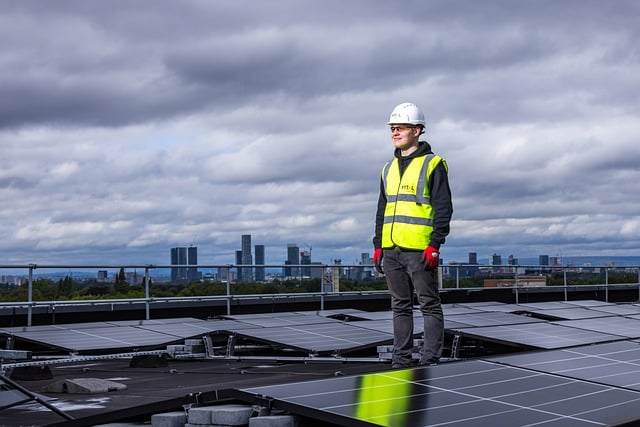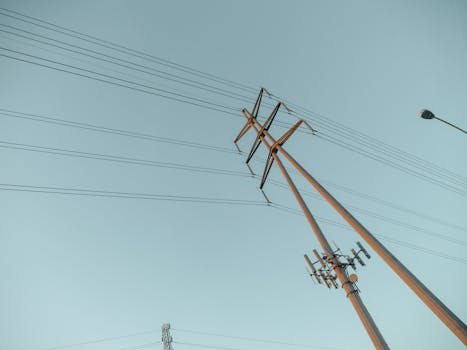“Power Up Your Solar System: Mastering the Wiring of Your Charge Controller!”
Wiring a solar charge controller is a crucial step in setting up a solar power system, as it regulates the voltage and current coming from the solar panels to the batteries, ensuring optimal charging and preventing overcharging. This introduction will guide you through the essential components, safety precautions, and step-by-step instructions needed to properly wire a solar charge controller. By following these guidelines, you can effectively harness solar energy and maintain the longevity of your battery system.
Understanding Solar Charge Controller Wiring Basics
Wiring a solar charge controller is a crucial step in setting up a solar power system, as it ensures that the energy generated by solar panels is efficiently stored in batteries for later use. To begin with, it is essential to understand the fundamental components involved in this process. A solar charge controller acts as a regulator, managing the flow of electricity from the solar panels to the batteries, preventing overcharging and deep discharging, which can significantly reduce battery life. Therefore, grasping the basics of wiring a solar charge controller is vital for anyone looking to harness solar energy effectively.
First and foremost, it is important to identify the types of solar charge controllers available. The two primary types are PWM (Pulse Width Modulation) and MPPT (Maximum Power Point Tracking). PWM controllers are generally more affordable and simpler to install, making them suitable for smaller systems. In contrast, MPPT controllers are more efficient and can extract more power from the solar panels, making them ideal for larger setups. Understanding the differences between these controllers will help you choose the right one for your specific needs.
Once you have selected the appropriate solar charge controller, the next step is to gather the necessary tools and materials. You will need a wire stripper, crimping tool, appropriate gauge wire, and connectors. Additionally, it is advisable to have a multimeter on hand to check voltage levels and ensure everything is functioning correctly. With your tools ready, you can begin the wiring process.
Start by disconnecting all power sources to ensure safety. This includes unplugging the solar panels and disconnecting the batteries. Once everything is powered down, you can begin wiring the solar charge controller. The first connection involves the solar panels. Typically, the solar charge controller will have designated terminals for the solar input, often labeled as “PV” or “Solar.” Connect the positive wire from the solar panel to the positive terminal on the charge controller and the negative wire to the negative terminal. It is crucial to ensure that these connections are secure to prevent any potential issues.
After connecting the solar panels, the next step is to wire the batteries. Locate the battery terminals on the charge controller, usually labeled as “Battery” or “Batt.” Similar to the solar panel connections, attach the positive wire from the battery to the positive terminal on the charge controller and the negative wire to the negative terminal. It is essential to connect the batteries after the solar panels to avoid any backflow of current that could damage the system.
Once all connections are made, it is time to double-check your work. Use the multimeter to verify that the voltage levels are correct and that there are no loose connections. After confirming that everything is in order, you can reconnect the solar panels and batteries. At this point, the solar charge controller should begin regulating the flow of electricity, charging the batteries as needed.
In conclusion, wiring a solar charge controller is a straightforward process that requires careful attention to detail. By understanding the components involved and following the correct wiring procedures, you can ensure that your solar power system operates efficiently and effectively. With the right setup, you can enjoy the benefits of renewable energy while contributing to a more sustainable future.
Step-by-Step Guide to Wiring a Solar Charge Controller

Wiring a solar charge controller is a crucial step in setting up a solar power system, as it regulates the voltage and current coming from the solar panels to the batteries, ensuring optimal charging and prolonging battery life. To begin, it is essential to gather all necessary tools and materials, including the solar charge controller, solar panels, batteries, and appropriate wiring. Before starting the wiring process, ensure that all components are compatible with each other, particularly the voltage ratings of the solar panels and batteries, as mismatched components can lead to inefficiencies or damage.
Once you have confirmed compatibility, the first step is to identify the terminals on the solar charge controller. Typically, there are three sets of terminals: one for the solar panel input, one for the battery output, and one for the load output. It is important to read the manufacturer’s instructions carefully, as the layout may vary between different models. After familiarizing yourself with the terminal layout, you can begin the wiring process.
Start by connecting the solar panels to the charge controller. To do this, take the positive wire from the solar panel and connect it to the positive terminal labeled “PV” or “Solar” on the charge controller. Next, connect the negative wire from the solar panel to the negative terminal on the charge controller. It is crucial to ensure that these connections are secure and that there are no exposed wires, as this can lead to short circuits or other electrical issues. Once the solar panel connections are complete, you can move on to the battery connections.
Before connecting the batteries, it is advisable to ensure that they are fully charged and in good condition. Connect the positive terminal of the battery to the positive terminal labeled “BATT” or “Battery” on the charge controller. Following this, connect the negative terminal of the battery to the negative terminal on the charge controller. Again, double-check that these connections are tight and secure. At this stage, it is important to note that the charge controller should not be connected to the batteries before the solar panels are wired, as this can cause damage to the controller.
After successfully connecting the solar panels and batteries, you can proceed to connect any loads, such as lights or appliances, to the charge controller. Locate the load terminals on the charge controller, which are typically labeled “LOAD.” Connect the positive wire from the load to the positive load terminal and the negative wire to the negative load terminal. This step allows the charge controller to manage the power supplied to your devices, ensuring they receive the appropriate voltage and current.
Once all connections are made, it is advisable to perform a final inspection. Check that all wires are properly insulated and that there are no loose connections. After confirming that everything is in order, you can power on the system. The charge controller should indicate that it is functioning correctly, often through LED lights or a display panel. If everything is working as intended, your solar power system is now ready to harness energy from the sun and provide power to your devices.
In conclusion, wiring a solar charge controller involves a systematic approach that ensures safety and efficiency. By following these steps carefully and paying attention to detail, you can successfully set up a solar power system that meets your energy needs while maximizing the lifespan of your batteries.
Common Mistakes to Avoid When Wiring a Solar Charge Controller
Wiring a solar charge controller is a crucial step in setting up a solar power system, and while it may seem straightforward, there are several common mistakes that can lead to inefficiencies or even damage to the system. Understanding these pitfalls is essential for anyone looking to harness solar energy effectively. One of the most frequent errors occurs during the selection of wire gauge. Many individuals underestimate the importance of using the correct wire size, which can lead to voltage drops and overheating. It is vital to consult the charge controller’s specifications and use a wire gauge that can handle the current without significant loss. This not only ensures optimal performance but also enhances safety.
Another common mistake is neglecting to follow the correct wiring sequence. When connecting the solar panels, battery, and load to the charge controller, it is crucial to adhere to the manufacturer’s instructions regarding the order of connections. Typically, the solar panels should be connected first, followed by the battery, and finally the load. Failing to follow this sequence can result in damage to the charge controller or the connected components. Additionally, it is important to ensure that all connections are secure and properly insulated. Loose connections can lead to arcing, which poses a fire hazard and can damage the system.
Moreover, many users overlook the significance of polarity when wiring a solar charge controller. Connecting the positive and negative terminals incorrectly can cause immediate failure of the charge controller or even damage to the batteries and solar panels. To avoid this, it is advisable to double-check all connections before powering up the system. Using color-coded wires can also help in maintaining clarity and preventing mistakes related to polarity.
In addition to these technical aspects, environmental factors should not be ignored. For instance, placing the charge controller in a location that is exposed to extreme temperatures or moisture can affect its performance and longevity. It is essential to install the controller in a well-ventilated area that is protected from the elements. Furthermore, ensuring that the charge controller is mounted securely can prevent physical damage from vibrations or movement.
Another mistake often made is underestimating the importance of fuses and circuit breakers. These components are critical for protecting the system from overcurrent situations. Failing to include appropriate fuses can lead to catastrophic failures, including battery damage or even fire. It is advisable to install fuses on both the solar panel and battery sides of the charge controller to safeguard against potential surges.
Lastly, many users neglect to monitor their systems after installation. Regular checks can help identify issues early on, such as poor connections or signs of wear. By keeping an eye on the system’s performance, users can make timely adjustments and ensure that their solar power setup operates efficiently.
In conclusion, wiring a solar charge controller requires careful attention to detail and an understanding of common mistakes that can compromise the system’s effectiveness. By selecting the correct wire gauge, following the proper wiring sequence, ensuring correct polarity, considering environmental factors, incorporating protective devices, and maintaining regular monitoring, users can avoid these pitfalls. Ultimately, taking the time to understand and implement these best practices will lead to a more reliable and efficient solar power system, maximizing the benefits of renewable energy.
Troubleshooting Wiring Issues with Solar Charge Controllers
When working with solar charge controllers, it is essential to understand that wiring issues can significantly impact the performance of your solar power system. Troubleshooting these wiring problems requires a systematic approach, as even minor mistakes can lead to inefficiencies or equipment damage. To begin with, it is crucial to familiarize yourself with the components of your solar power system, including the solar panels, batteries, and the charge controller itself. Each component plays a vital role in the overall functionality, and any wiring discrepancies can disrupt the entire system.
One common issue that arises is incorrect wiring connections. This can occur when the positive and negative terminals of the solar panels, batteries, or charge controller are not connected properly. To address this, start by visually inspecting all connections. Ensure that the positive terminal of the solar panel is connected to the positive terminal of the charge controller, and likewise for the negative terminals. If you find any discrepancies, rectify them immediately, as reversed connections can lead to damage to the charge controller or other components.
In addition to checking for correct connections, it is also important to examine the integrity of the wiring itself. Over time, wires can become frayed or damaged due to environmental factors or wear and tear. If you notice any signs of damage, such as exposed copper or insulation wear, it is advisable to replace the affected wires. Using high-quality, weather-resistant wiring can help prevent future issues and ensure a reliable connection.
Another aspect to consider is the gauge of the wire being used. Using wires that are too thin can lead to voltage drops, which can hinder the performance of your solar charge controller. To troubleshoot this, refer to the specifications of your system to determine the appropriate wire gauge. If you find that the existing wiring is inadequate, replacing it with a thicker gauge wire can improve efficiency and reduce the risk of overheating.
Furthermore, it is essential to ensure that the solar charge controller is compatible with the battery type being used. Different battery chemistries, such as lead-acid or lithium-ion, require specific charging profiles. If the charge controller is not set correctly for the battery type, it may not function optimally, leading to undercharging or overcharging. To resolve this, consult the user manual of your charge controller to adjust the settings accordingly.
In some cases, the issue may not be with the wiring itself but rather with the charge controller’s functionality. If you have verified all connections and wiring integrity but are still experiencing problems, it may be worthwhile to reset the charge controller. This can often resolve minor glitches that may be affecting performance. Additionally, checking for firmware updates or manufacturer recalls can provide insights into potential issues that may not be immediately apparent.
Lastly, if troubleshooting efforts do not yield results, seeking professional assistance may be necessary. An experienced technician can conduct a thorough inspection of your solar power system, identifying and rectifying any underlying issues that may be affecting performance. By taking a methodical approach to troubleshooting wiring issues with solar charge controllers, you can ensure that your solar power system operates efficiently and reliably, maximizing the benefits of renewable energy for your needs.
Q&A
1. **Question:** What are the basic components needed to wire a solar charge controller?
**Answer:** You need a solar panel, a solar charge controller, a battery, and appropriate wiring (including connectors and fuses).
2. **Question:** How do you connect the solar panel to the charge controller?
**Answer:** Connect the positive (+) terminal of the solar panel to the positive (+) input terminal of the charge controller, and the negative (-) terminal of the solar panel to the negative (-) input terminal of the charge controller.
3. **Question:** How do you connect the battery to the charge controller?
**Answer:** Connect the positive (+) terminal of the battery to the positive (+) output terminal of the charge controller, and the negative (-) terminal of the battery to the negative (-) output terminal of the charge controller.
4. **Question:** What safety precautions should be taken when wiring a solar charge controller?
**Answer:** Always ensure that the system is powered off before making connections, use appropriate wire sizes to handle the current, and install fuses or circuit breakers to protect against overcurrent.
Conclusion
To wire a solar charge controller, first, ensure all components are powered off. Connect the solar panel’s positive and negative leads to the corresponding terminals on the charge controller. Next, connect the battery’s positive and negative terminals to the charge controller’s battery terminals. Finally, if applicable, connect the load to the designated load terminals on the controller. Double-check all connections for correctness and secure them properly. Once everything is connected, power on the system to ensure proper functionality. Always follow the manufacturer’s instructions for specific wiring details and safety precautions.




